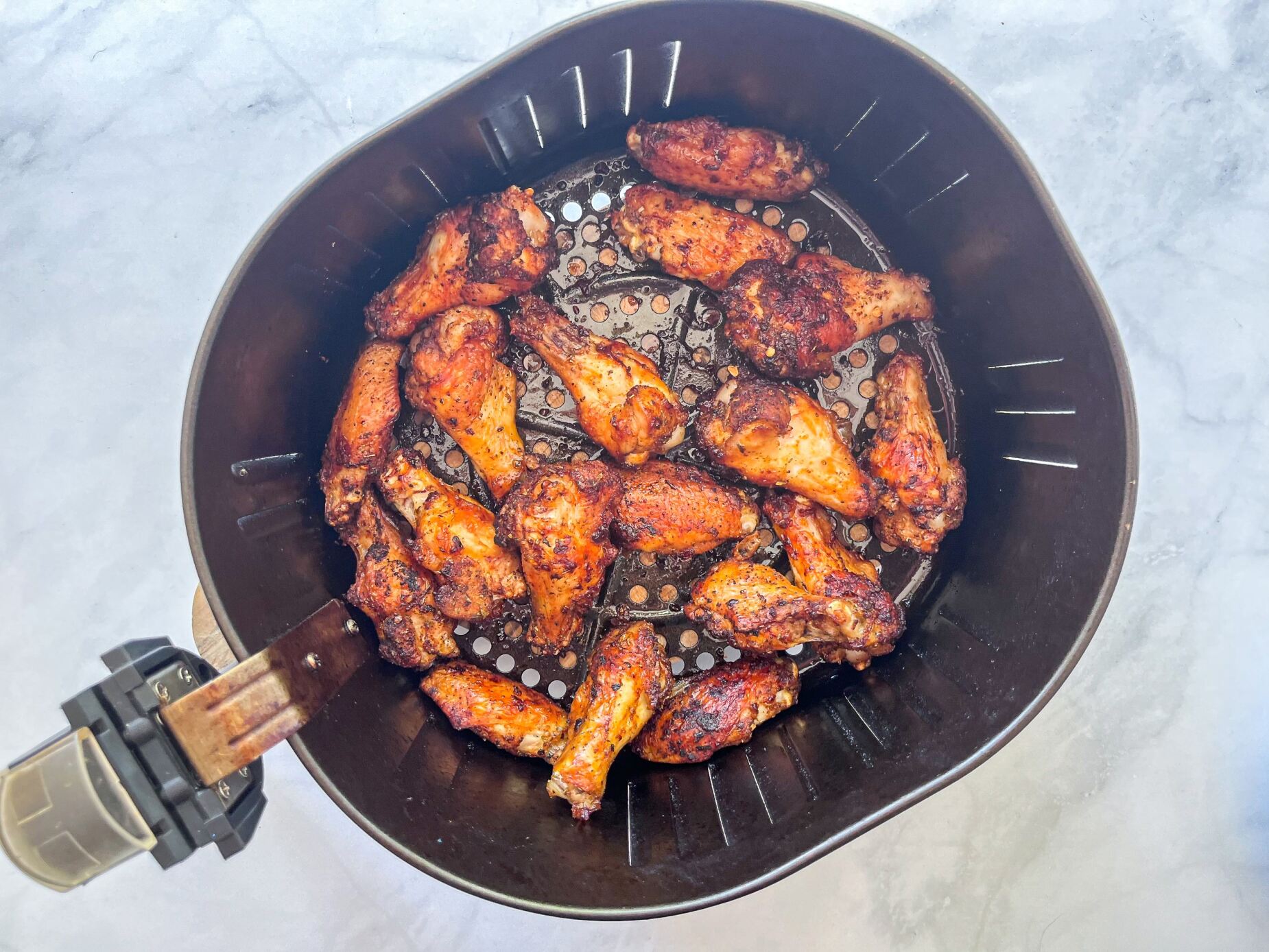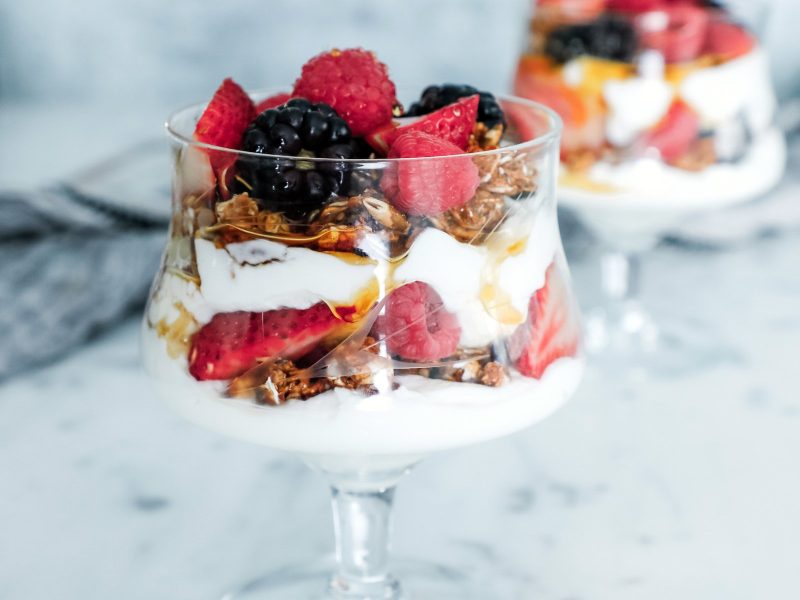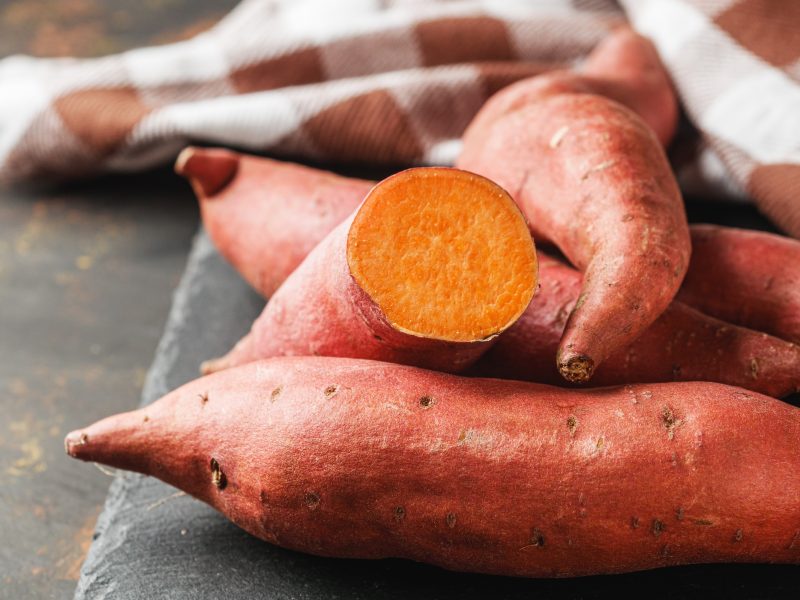Frying foods—especially deep-frying—is a common cooking method in the United States and many parts of the world. However, it’s known to be associated with several health risks, especially when using certain types of oils. Air fryers can be a healthy alternative to traditional stovetop frying—as long as you use a high-quality fryer and follow certain steps.
Health Risks of Regular Frying
Here are some key downsides of frying foods:
- Trans Fats Formation: When heated to high temperatures, oils can form trans fats. Trans fats are known to increase inflammation and contribute to chronic health conditions. [1]
- Acrylamide Production: This chemical forms in starchy foods when fried at high temperatures. Acrylamide is considered a potential carcinogen. [2]
- Inflammation and Oxidative Stress: Frying oils can degrade when heated at high temperatures. The oxidized fats have harmful compounds that contribute to oxidative stress, damaging cells. This sets the stage for a variety of chronic diseases. [3]
Oxidized fats and starches from traditional frying can lead to weight gain and inflammation. Over time, this can contribute to autoimmune disease, kidney damage, diabetes, heart disease, and even cancer. [4]
How to Reduce the Downsides of Traditional Frying
It’s possible to make fried foods healthier by adjusting the cooking process and the ingredients you use. Below are some strategies to make fried foods less harmful.
- Use Oils with High Smoke Points: High smoke point fats, like beef tallow, avocado oil, or refined olive oil are more stable at high temperatures. Since they’re less susceptible to damage, using these oils reduces the risk of creating trans fats and other toxins. [5, 6]
- Opt for Oils Rich in Healthy Fats: Extra-virgin olive oil and avocado oil are high in healthy monounsaturated fats. Opt for these over canola and other seed oils.
- Maintain Proper Oil Temperature: Frying at between 350°F and 375°F creates a crispy exterior while minimizing oil absorption. If the oil is too hot, it can burn the food and produce harmful compounds. If it’s too cool, the food will absorb more oil, making it greasier. [7]
- Fry Smaller Portions: Frying smaller portions allows the oil to maintain its temperature better. As a result, the food absorbs less oil and will have a crispier texture.
- Drain Excess Oil: After frying, place the food on paper towels or a wire rack to drain excess oil. This helps remove some of the oil from the surface of the food, and therefore decreases the consumption of potentially oxidized fats.
- Add Antioxidant Herbs and Spices: Adding certain herbs and spices to foods before frying may reduce oxidation. A 2022 study found that adding ginger or rosemary to pork meatballs reduced the harmful compounds produced when frying. [8]
- Consider Air Frying! Air fryers work by circulating hot air around the food, providing a similar result to conventional frying with less potentially oxidized fat used. Air frying has also been shown to improve the antioxidant properties of food compared to other thermal processing methods, such as sautéing or steaming. [9,10] You can make many fried classics with an air fryer—even sweet potato fries!
Air Frying Tips for Health and Safety
Air frying can be an excellent way to prepare crispy, delicious foods with less oil than traditional frying. To ensure your air-fried meals are both healthy and safe, consider the following tips:
- Buy a High-Quality Air Fryer: First, find an air fryer that’s tested and free of PFAS, like those in Teflon™ coatings. Look for stainless steel or glass air fryers. [11]
- Choose Healthy Oils: Select oils with a higher smoke point and good fat profile (such as refined coconut oil, macadamia nut oil, or avocado oil) to maintain the health benefits of the meal.
- Use Oil Sparingly: While air fryers require little to no oil, adding a small amount (1-2 teaspoons) of olive or avocado oil can improve the texture and flavor of the food. Use a spray bottle for even application.
- Avoid Overcooking Starchy Foods: When cooking starchy foods like sweet potatoes, avoid overcooking to reduce acrylamide formation. Cook these foods until golden, not dark brown. Soaking sweet potatoes in water before air frying may also help.
- Monitor Cooking Times and Temperatures: Air fryers can cook food faster than traditional methods, so monitor the cooking time closely to avoid burning. Refer to your air fryer’s manual for recommended times and temperatures and adjust as needed.
- Clean After Every Use: Clean the air fryer basket, tray, and any accessories after each use to prevent food residue buildup, which can affect the taste of your food and potentially pose a fire hazard.
Air fryers can be an excellent way to achieve the taste and texture of fried foods without the potential downsides associated with traditional frying. They make it easier to prepare Paleo-friendly meals without compromising health. Whether roasting vegetables, making healthy finger food, or experimenting with new recipes, an air fryer can be a valuable tool in the Paleo kitchen. However, how healthy they are depends on which one you buy and how you use it.
Air Fryer Recipes
Whether you’re just getting started with a new air fryer or are already an air frying pro, check out the following recipes for healthy, Paleo meal inspiration.
References
- Koch E, Löwen A, Sharline Nikolay, Willenberg I, Nils Helge Schebb. Trans-Hydroxy, Trans-Epoxy, and Erythro-dihydroxy Fatty Acids Increase during Deep-Frying. Journal of Agricultural and Food Chemistry. 2023 May 4;71(19):7508–13.
- Bellicha A, Wendeu-Foyet G, Coumoul X, Koual M, Pierre F, Guéraud F, et al. Dietary exposure to acrylamide and breast cancer risk: results from the NutriNet-Santé cohort. The American Journal of Clinical Nutrition. 2022 Sep 2;116(4):911–9.
- Zhu XF, Hu YQ, Dai ZC, Li XJ, Zhang J. Associations between trans fatty acids and systemic immune-inflammation index: a cross-sectional study. Lipids in Health and Disease [Internet]. 2024 Apr 27 [cited 2024 Aug 27];23(1). Available from: https://pubmed.ncbi.nlm.nih.gov/38678208/
- Pipoyan D, Stepanyan S, Stepanyan S, Beglaryan M, Costantini L, Molinari R, et al. The Effect of Trans Fatty Acids on Human Health: Regulation and Consumption Patterns. Foods. 2021 Oct 14;10(10):2452.
- Does beef tallow have a high smoke point? – Chef’s Resource [Internet]. Chef’s Resource. 2024 [cited 2024 Aug 27]. Available from: https://www.chefsresource.com/does-beef-tallow-have-a-high-smoke-point/
- Stradley L. Cooking Oils and Smoking Points [Internet]. What’s Cooking America. 2015. Available from: https://whatscookingamerica.net/information/cookingoiltypes.htm
- The Do’s and Do Not’s of Shallow Frying [Internet]. Food52. 2016. Available from: https://food52.com/blog/18669-the-do-s-and-do-not-s-of-shallow-frying
- He X, Li B, Yu X, Zhuang Y, Li C, Dong L, et al. Inhibiting Effects of Ginger and Rosemary on the Formation of Heterocyclic Amines, Polycyclic Aromatic Hydrocarbons, and Trans Fatty Acids in Fried Pork Balls. Foods (Basel, Switzerland) [Internet]. 2022 Nov 23 [cited 2024 Jan 20];11(23):3767. Available from: https://pubmed.ncbi.nlm.nih.gov/36496575/
- Nandasiri R, Semenko B, Wijekoon C, Suh M. Air-Frying Is a Better Thermal Processing Choice for Improving Antioxidant Properties of Brassica Vegetables. Antioxidants (Basel). 2023 Feb 15;12(2):490. doi: 10.3390/antiox12020490. PMID: 36830048; PMCID: PMC9952021.
- Santos CSP, Cunha SC, Casal S. Deep or air frying? A comparative study with different vegetable oils. European Journal of Lipid Science and Technology. 2017 May 2;119(6):1600375.
- Segedie L. Safest Air Fryers & Air Fryer Ovens Sans Toxic PFAS Coatings 2024 [Internet]. MAMAVATION. MAMAVATION; 2024 [cited 2024 Aug 27]. Available from: https://www.mamavation.com/food/safest-air-fryers-sans-toxic-pfas-coatings.html


